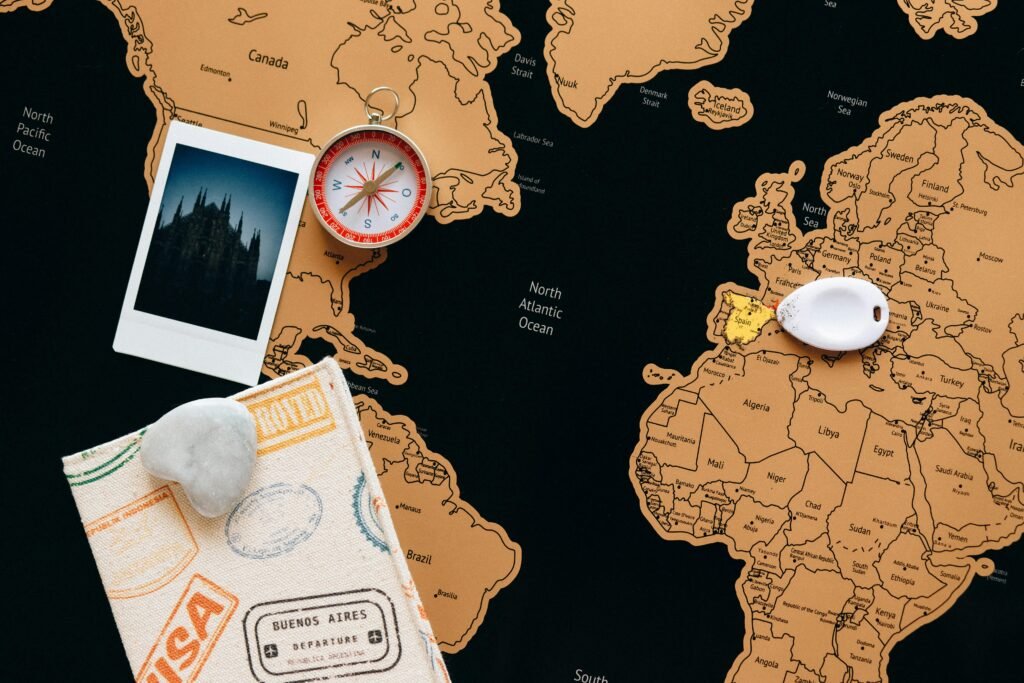Miqat is an Arabic word. There are two types of Miqat for Hajj and Umrah. Miqat refers to a designated boundary.
- Miqat al-Zaman (Time Miqat)
- Miqat al-Makani (Place Miqat)
The time Miqat consists of three months: Shawwal, Zul-Qada, and Zul-Hijjah. Miqat consists of five locations.
For Hajj and Umrah, the places where it is obligatory to wear Ihram are known as Miqat. In other words, it is obligatory to wear Ihram at five locations. One must wear Ihram before crossing the Miqat boundary. If anyone crosses the Miqat boundary without wearing Ihram, they must sacrifice an animal. If someone mistakenly crosses the Miqat location, they must return to the Miqat location to wear Ihram. However, if someone believes it is impossible to return to the Miqat location, they must sacrifice an animal.
5 Miqat Name
Abdullah ibn Abbas (R.) said that the Prophet (S.) specified the Miqat locations: for the people of Medina, it is Zul-Hulaifah; for the Syrians, it is Juhfah; for the people of Najd, it is Qarn al-Manazil; for the people of Yemen, it is Yalamlam. (Bukhari, Hadith: 1524, 1526, Muslim, Hadith: 1181)
The Prophet (S) also specified “Jadid Irk” as the Miqat for the people of Iraq.

5 Miqat Locations
Miqat al-Zul-Hulaifah: This is currently known as Abu’yar Ali. It is 420 kilometers from Makkah. People from Medina and those traveling by this route wear Ihram here. It is located 10 kilometers southeast of the Masjid al-Nabawi. This is the fastest Miqat from Makkah.
Miqat al-Juhfah: Its current name is Rabigh. This place is located 10 kilometers inland from the Red Sea, near the city of Rabigh. Juhfah is no longer in use, so people now wear Ihram from the location known as Rabigh. It is 186 kilometers from Makkah via the Jumum Valley route. People from Syria, Lebanon, Jordan, Palestine, Egypt, Sudan, Morocco, African countries, and some northern areas of Saudi Arabia will wear Ihram here. Those who do not travel via the Medina route will also wear Ihram here.
Qarn al-Manazil: Currently known as As-Sayl al-Kabir, it is located 78 or 85 kilometers from Makkah. People from Riyadh, Dammam, Ta’if, Qatar, Kuwait, UAE, Bahrain, Oman, Iraq, Iran, and Gulf countries wear Ihram here.
A second location, called ‘Wahid Muhrim,’ is part of Qarn al-Manazil. It is located 75 kilometers from Makkah, on the Taif-Makkah road, near the Hada area. This location has modern facilities, including a large mosque,ablution and bathing facilities, and ample parking. This is not a new Miqat, but a part of Qarn al-Manazil.
Yalamlam: This is the name of a valley. It is currently known as “Sadiya.” People from Yemen, Bangladesh, India, China, Indonesia, Malaysia, South Asia, and countries in the eastern regions wear Ihram here.
Jadid Irk: This is located 100 kilometers from Makkah. It is no longer in use. This used to be the Miqat for the people of Iraq, but now they use the third Miqat, As-Sayl al-Kabir.
These five locations are known as Miqat. One must wear Ihram before crossing these locations. However, those who live within the Miqat locations wear Ihram from their homes. They make the intention and wear Ihram from their homes. Even people from Makkah will wear Ihram from Makkah, but those living in the Haram area will travel to the nearest Halal area to wear Ihram for Umrah. This is because the Prophet (S.) said that people living within the Miqat boundaries would wear Ihram from their homes. Even people from Makkah will wear Ihram from Makkah. (Bukhari, Hadith: 1524)
Is Masjid Ayesha Miqat?
Masjid Aisha is widely known as a Miqat. It is located in the Makkah Tan’im area, 7.5 kilometers north of Makkah on the Makkah-Medina road, “Tariq al-Hijrah.” Later, a large mosque was built there, which is now known as Masjid Aisha. Foreign pilgrims who are performing their second or third Umrah often wear Ihram there. Although this was not designated as a Miqat during the time of the Prophet, it is used today.
Those who want to perform multiple Umrah may go to a place called “Ji’ranah,” located outside the Haram area, to wear Ihram. Currently, there is a mosque there. After the conquest of Makkah and the Battle of Hunayn in the eighth Hijri year, the Prophet (S.) performed Umrah from Ji’ranah. However, the Prophet (S.) never performed more than one Umrah during a single journey. Therefore, it is better to perform only one Umrah during a trip.



